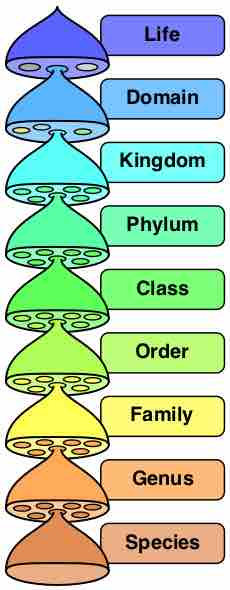Even back to Antiquity the two clades of animals and plants were recognized. They were given the taxonomic rank of Kingdom (biology) by Linnaeus. Although he included the fungi with plants with some reservations, it was later realized that they are quite distinct and warrant a separate kingdom, the composition of which was not entirely clear until the 1980's. The various single-cell eukaryotes were originally placed with plants or animals when they became known. The German biologist Georg A. Goldfuss coined the word protozoa in 1830 to refer to organisms such as ciliates and corals. This group was expanded until it encompassed all single-cell eukaryotes. They were given their own kingdom, the Protista, by Ernst Haeckel in 1866.

Biological classification
The hierarchy of biological classification's eight major taxonomic ranks. A genus contains one or more species. Intermediate minor rankings are not shown.
The eukaryotes came to be composed of four kingdoms: Kingdom Protista, Kingdom Plantae, Kingdom Fungi, and Kingdom Animalia. The protists were understood to be "primitive forms," and thus an evolutionary grade, united by their primitive unicellular nature. The disentanglement of the deep splits in the tree of life only really got going with DNA sequencing, leading to a system of domains rather than kingdoms as top level rank being put forward by Carl Woese, uniting all the eukaryote kingdoms under the eukaryote domain . As such the tree of life consists of three domains: Archaea, Bacteria, and Eukarya. The arrangement of taxa reflects the fundamental differences in the genomes, a less anthropomorphic "animal-centric" world view. At the same time, work on the protist tree intensified, and is still actively going on today. Several alternative classifications have been forwarded, though there is no consensus in the field.